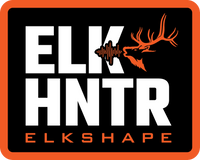What is the Best Workout Split for Hypertrophy
In strength training, hypertrophy is king. It is the desired outcome for many fitness enthusiasts. Hypertrophy means muscle growth. It happens with specific exercises and workout plans. Understanding the details of hypertrophy training is key. It's vital for anyone who wants to maximize their muscle gains well.
Understanding Hypertrophy
Before delving into workout splits, it's crucial to grasp the fundamentals of hypertrophy. There are two main types. Myofibrillar hypertrophy involves bigger and more muscle fibers. Sarcoplasmic hypertrophy focuses on expanding the fluid-filled sarcoplasm in muscle cells. Both types add to muscle growth. A good training approach includes elements of both.
Mechanisms of hypertrophy include muscle damage, metabolic stress, and mechanical tension. Muscles are damaged by intense exercise. This creates micro tears that spur repair and growth. Metabolic stress is the buildup of metabolites like lactate. It happens during high-rep, high-volume training. It can trigger hypertrophic responses. Tension happens when muscles bear a load. It signals the need for growth.
Principles of an Effective Hypertrophy Workout Split
To optimize hypertrophy gains, several principles must be incorporated into workout splits. Progressive overload is part of the puzzle. You do it by slowly increasing the weight, reps, or sets. This keeps challenging the muscles and spurring growth. Volume, the total work done, is also crucial for hypertrophy. Higher volume usually means more muscle growth. How often muscles are trained, or "frequency," affects hypertrophy as well. Most experts recommend training each muscle group at least twice per week. We specifically choose exercises that focus on compound movements at ElkShape Training. These exercises target multiple muscle groups at once. Also, do isolation exercises to address specific weaknesses or lagging body parts. Adequate recovery is essential. It allows muscles to repair and grow between workouts.
Popular Workout Splits for Hypertrophy
Several workout splits have proven effective for hypertrophy training. The Push/Pull/Legs (PPL) split divides workouts into three training splits. Pushing movements are for the chest, shoulders, and triceps. It also covers pulling movements (back, biceps) and leg exercises. An Upper/Lower split alternates between upper and lower body workouts. These would be done on separate days. A Full Body split targets all major muscle groups in each workout. This is ideal for beginners or those with limited time.
What splits are best for hypertrophy?
Here is one of our favorite training splits. Back and triceps, quads and chest, biceps and hamstrings and shoulders and arms on the last day. This is obviously a bit different than the traditional split. For example following a classic training split, you would train triceps on your chest day. By the time you train your triceps, they'll be tired. You'll have done lots of pressing movements. This is obviously a less than ideal time to train them. Your biceps would be fresh. So, you could hit them with 100% intensity and effort. This split has the added benefit of working your biceps and triceps twice per week. It also stimulates them. The leg days are also broken down by muscle group. Quad and hamstring day could also be called knee and hip dominant exercise day. Your quad-focused leg day can include squats. It can also include leg presses, extensions, and walking lunges. and your hamstring days can focus on posterior chain exercises. such as deadlift variations, glue bridges, hip thrusts step ups and kettlebell swings for example.
Next another one which we are big fans of of especially for beginners is the full body split. the full body split is very effective for those of you who are new to weightlifting. When you're starting out, you want to train your muscles many times each week. This will make you good at the exercises and get your muscles used to frequent use. when setting up a full body split make sure it's balanced. you want a horizontal push and pull and a vertical push and pull. a hip dominant exercise and a quad dominant exercise and an abdominal exercise. For example, a good workout would include a dumbbell chest press and chin ups. It would also include seated shoulder press, bent over rows, squats, deadlifts, and a plank variation.
Finally the power and hypertrophy split. If you want to train for both strength and size this is a great split to use. You start your sessions with the three big lifts. You try to get stronger at those lifts. I have found that it is best to aim for three to five reps on your squat, bench, or deadlift. Do this before you increase the weight. and after that you'd follow this up with a body building training sessions. Training for hypertrophy training to build muscle consists of isolation exercises at higher rep ranges.
When picking a hypertrophy workout split, consider several factors. Training experience is key. Beginners often benefit from full-body routines. These allow for frequent exposure to many exercises. Availability is another crucial schedule consideration. Some splits need more time. Additionally, individual muscle recovery rates vary. This requires adjusting how often and how hard to train. It's based on personal recovery abilities. Finally, personal preferences and goals should shape the choice of workout split. This could mean prioritizing certain muscle groups or using specific training methods. The ElkShape Training daily workouts incorporate many of these splits throughout the year.
How quickly are you recovering between sessions?
Protein synthesis peaks in around 36 to 48 hours after training. So this means your muscles are generally ready to train again after that 36 to 48 hour window and assuming you recover well, you can train a body part once every three days for ideal gains. This generally translates to twice a week which is on average the optimal frequency for most lifters. So, if you train your chest on Monday and it's fully recovered by Wednesday, there's no reason to wait another week to train it. But, the opposite is also true. If you train chest on a Monday and you're following a split that tells you to train chest on a Wednesday even though your chest is still sore from the last training your power output is going to be less and your performance in the gym is going to suffer.
Remember, you're breaking down the muscle you're damaging it you're tearing up muscle fibers. You have to make sure your recovery is on point outside of your training so that you are in an anabolic state outside of your training. If you're not recovering you need more rest. If you are recovering you're not sore you're full of energy you can be more aggressive with your training.
How can I speed up hypertrophy?
Regardless of the chosen workout split, several tips can help maximize hypertrophy gains. Focusing on proper form ensures muscles work well. It also lowers injury risk. Nutrition and supplements are critical for muscle growth. Enough protein and smart supplements help with recovery and repair. Check out some of our guides on nutrition. Rest and recovery are essential. Muscles grow and repair during rest, not just during workouts. Tracking progress and adjusting training variables accordingly allows for continual adaptation and improvement.
Conclusion
Achieving hypertrophy requires a combination of targeted training, proper nutrition, and strategic recovery. By understanding hypertrophy training principles. And by picking the right workout split. Individuals can unlock their full potential for muscle growth. Consistency, patience, and dedication are key. They are crucial on the journey to build a strong, muscular body. The body reflects hard work and commitment. They were invested in the pursuit of hypertrophy.

